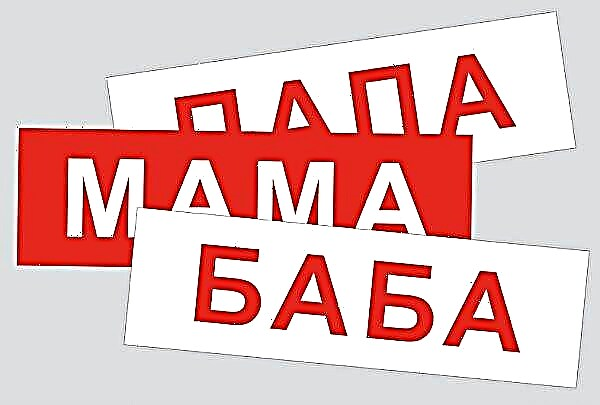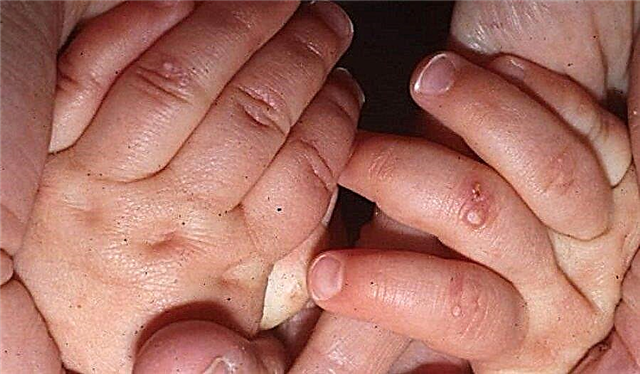
When a child has a severe cough, many doctors recommend mucolytic drugs. One of them is the German drug Ambrobene. What form of this medication is used in childhood and when should Ambrobene be given to children?

Release form
Ambrobene is produced in the following forms:
- Syrup... This is the most child-friendly form, represented by a delicious raspberry transparent solution, which is often colorless, but can also be slightly yellow. It is sold in a dark 100 ml bottle, and the concentration of the active ingredient per ml of syrup is 3 mg. For correct dosing, in addition to the medicine bottle, there is a plastic cup in the syrup package.
- A solution taken by mouth and used for inhalation. The concentration of the active substance in this form per milliliter of solution is 7.5 mg of the drug. This Ambrobene is represented by a clear liquid, poured into 100 ml bottles. Also, this odorless colorless or yellowish solution is sold in a smaller package - 40 ml.
- A solution for intravenous injections. It is also represented by a colorless transparent solution that has no odor, but may have a yellow tint. Such a drug is packaged in ampoules of 2 milliliters. Each of them contains 15 mg of the active ingredient (7.5 mg / 1 ml). One package contains five ampoules.
- Pills, each of which contains 30 mg of active substance. One package contains 20 or 50 of these tablets, packed in blisters of 10 pieces. They are round, white, convex on both sides, with a notch, along which the tablet is easily divided into halves.
- Capsules, a feature of which is long-term action. Each capsule contains 75 mg of the active ingredient. They have a transparent body and a brown lid, and contain white or light yellow granules inside. Such capsules are packaged in blisters of ten pieces, and one package includes 1-2 blisters.

Composition
The main active compound in any of the Ambrobene forms is ambroxol hydrochloride. Excipients differ in different versions of the drug:
- The syrup includes sorbitol, propylene glycol, and water. For such a drug to be sweet, it contains saccharin, and for a pleasant smell, the medicine contains a raspberry flavor.
- The solution given by mouth contains potassium sorbate, water and chlorous acid.
- Additional components of the injection form are NaCl and citric acid. Also in this medicine there is Na hydrogen phosphate heptahydrate.
- Tablet form for solid form and density contains silica, corn starch, lactose in the form of monohydrate and Mg stearate.
- Inside the capsules, in addition to ambroxol, there is MCC, silicon dioxide, hypromellose and a copolymer of ethacrylate with methacrylic acid, and the capsule itself is made of gelatin, titanium dioxide and dyes.
Promotional video for Ambrobene:
Operating principle
Once in the human body, Ambrobene is transferred to the lung tissue, where the maximum concentration of the drug is observed.
Also, this drug can penetrate the fetus and human milk. The action of Ambrobene after oral administration begins in half an hour, and the duration of the therapeutic effect can last up to 12 hours (time depends on the dosage)... If the injection method of administration is used, then the therapeutic effect occurs faster and lasts up to 10 hours.
Ambroxol in the composition of the drug dilutes the too viscous secretion produced in the bronchi, due to which the phlegm leaves more easily. Taking Ambrobene has the following effect:
- It activates the synthesis of enzymes that break down substances in the bronchial mucus. This affects the viscosity of the phlegm, making it easier to drain from the airways.
- Prevents adhesion of cilia of cells of the mucous membrane of the bronchial tree.
- Stimulates the synthesis of the active substance, which prevents the alveoli from sticking together during exhalation (surfactant).
- It neutralizes free radicals, protecting the cells of the body from their damaging effects (this effect is called antioxidant).
Watch the video in which Dr. Komaroski shows you how to do a drainage massage to thin phlegm. This method will help to cough up phlegm and will be helpful for coughing.
Indications
Any of the forms of Ambrobene is used for acute or chronic diseases of the respiratory system, a symptom of which is a violation of sputum discharge. The drug is prescribed for:
- Bronchial asthma.
- Pneumonia.
- Laryngitis.
- Bronchitis.
- ARVI.
- Bronchiectasis.
- Obstructive pulmonary pathologies.
Since Ambrobene has a positive effect on the synthesis of surfactant, one of the reasons for using such a medicine will be the respiratory distress syndrome in a newborn child.

At what age can you give?
In pediatric practice, Ambrobene is used in babies from birth. The medicine can even be prescribed to premature babies who have developed distress syndrome. In this case, the treatment of children with such a medication for the first 2 years of life must be monitored by a doctor. It is unacceptable to give Ambrobene to infants under one year old (for example, a 3-month-old baby or at 5 months) without consulting a pediatrician.
The tablet form of Ambrobene is prescribed for children over 6 years old, when the child can already swallow the pill without difficulty... Due to the high dose of the drug, Ambrobene capsules are not used in the treatment of children under 12 years of age.
Contraindications
Treatment of any form of Ambrobene is not recommended if a small patient has an intolerance to some component of the drug - both its active substance and any of the auxiliary compounds (for example, lactose present in the tablets).
Also, the drug is not given:
- With epilepsy and convulsive syndrome.
- With peptic ulcer.
- With serious kidney pathologies.
- With impaired liver function.
- With an excess amount of sputum, which is not excreted due to impaired motility in the bronchi.
If a child has any of these problems, the need to prescribe Ambrobene should be weighed by the doctor, and the dosage needs to be adjusted. For problems with carbohydrate metabolism or diabetes mellitus, Ambrobene syrup is not recommended.

Side effects
In the annotation to Ambroben, it is noted that the drug can provoke:
- Shortness of breath or nasal discharge.
- Drying out of the oral mucosa, but sometimes the drug, on the contrary, can provoke excess saliva.
- Upset stool, abdominal pain, nausea, and other signs that are attributed to dyspepsia.
- Allergies, which can manifest as hives, swelling of facial tissues, fever, or itching. In isolated cases, anaphylactic reaction occurs.
- Weakness, increased blood pressure, difficulty urinating, headaches. These side effects occur in less than 1% of children.
Instructions for use
Ingestion
The medicine in the form of a syrup, solution, capsules or tablets is recommended to be taken after meals. The syrup and solution are dispensed using a measuring cup with water. The solution can be diluted not only with water, but also with another liquid (juice, tea). Tablets or capsules should be swallowed without chewing, then washed down with a liquid of about 200 ml.
How many days to take Ambrobene depends on the disease and its severity. If the medicine has not been prescribed by a doctor, the use of the medicine should not be longer than 5 days.

For the drug to work more effectively, it is important to pay attention to the drinking regimen of the little patient. Children treated with Ambrobene should be given plenty of fluids. This is also emphasized by Dr. Komarovsky.
Ambrobene capsules are prescribed 1 capsule per day. The dosage of Ambrobene tablets for children will be as follows:
If the child is not yet 12 years old, it is usually prescribed to take a single dose twice, but for some diseases, the doctor may prescribe a dose three times a day. For twelve-year-old children and older, the drug is immediately prescribed 3 times a day, and after two or three days, the effectiveness of treatment is assessed. Further, a single dose can be increased to two tablets twice a day or reduced to 1 tablet 2 times a day.
The syrup is prescribed in the following dose:
At the age of over 12 years, therapy begins with 10 ml of syrup for 1 dose, which corresponds to two cups. The medicine is given three times a day (only 90 mg of ambroxol), and after a few days, how it works is assessed. Further, the drug will be taken twice, but the dosage is determined based on the effectiveness. With a sufficient effect, the child continues to be given 10 ml of syrup (60 mg of the active substance is obtained per day), and with an unexpressed effect, the dose is increased to 20 ml of syrup (the daily dose of the active ingredient is 120 mg).
Ambrobene solution is taken orally in such a single dose:
In the first 2 years of life, the solution is given only after a doctor's appointment twice a day. For children who are two years old, but have not yet reached the age of 6, a three-time intake is recommended. For children from 6 to 12 years old, the medicine can be prescribed a day, either twice or three times.

If three days of treatment with Ambrobene solution for a child over 12 years old, the drug did not give a good therapeutic effect, the single dosage is increased to 8 milliliters, and the medicine is given 2 times a day. With a sufficient effect, Ambrobene continues to give 4 milliliters, but they switch to a double dose.
Injections
The injectable form of Ambrobene is injected into a vein by a drop method. A jet injection is also possible, which should be very slow (minimum 5 minutes). To dilute the drug, it is allowed to use Ringer-Locke's solution, saline solution or glucose solution.
To calculate the dosage, you need to know the weight of the baby, since per 1 kg of the child's body weight, 30 mg of ambroxol is required. This daily amount of medication is divided into 4 injections. After the disappearance of acute symptoms, the injection of Ambrobene should be replaced with the use of other forms, for example, syrup or tablets.

Inhalation
Ambrobene solution for internal use can be breathed through a nebulizer... Before the procedure, the medicine is diluted in equal proportions with saline to sufficiently moisturize the mucous membrane. It is also recommended to heat the treatment solution to body temperature.
So that the cough does not intensify, the child is offered to make calm exhalations and breaths, and children with bronchial asthma are advised to supplement inhalation with a bronchodilator to prevent spasm.
The course of treatment includes 1-2 inhalations per day for 4-5 days. For one procedure, you need to take Ambrobene in solution at the following dose:
For more information on the principle of action of Ambrobene during inhalation, see the video.
Overdose
If the recommended dose of Ambrobene is exceeded, it can lead to nausea, drooling, vomiting, restlessness, loose stools and a decrease in blood pressure. In the case when an overdose is detected within 2 hours after drinking Ambrobene in excess, the patient should undergo gastric lavage. In other situations, with a worsening general condition, you need to see a doctor.
Interaction with other drugs
- Prescribing Ambrobene with a wet cough together with antitussives, the action of which is to inhibit the cough reflex, can be dangerous. This combination of medicines increases the risk of stagnation of secretions in the bronchi, which will worsen the child's condition.
- The use of Ambrobene together with some antibiotics leads to an increase in their concentration in the secretions that are secreted in the bronchi. A similar effect was noted during treatment with Cefuroxime and Amoxicillin. Ambrobene also acts on Erythromycin and Doxycycline. This interaction is often used when a child has a bacterial respiratory tract infection.
- The solution for injection into a vein should not be mixed with drugs with a pH higher than 6.3, otherwise a precipitate may form.

Terms of sale
You can buy Ambrobene for children in the pharmacy without a prescription, with the exception of the injection form. If you need to buy ampoules of such a drug, you will have to show a doctor's prescription.
The average price of 20 Ambrobene tablets is 150 rubles, packs of 5 ampoules are 180 rubles, and 20 capsules are about 250 rubles. For a 100-ml bottle of solution for inhalation, you need to pay about 120 rubles, and a bottle of syrup of the same volume will cost 170 rubles.
Storage conditions and shelf life
So that Ambrobene does not lose its medicinal properties, it is worth finding a dry place to store such a drug, to which babies will not have access. You need to store the medicine at a temperature below + 25 ° C.
The shelf life of all Ambrobene forms is 5 years. However, such long-term storage of the syrup is possible only if it has not been opened. After the package has been opened, the medicine must be used within 1 year.
Reviews
In most cases, mothers who treated their children with one of the Ambrobene forms respond positively to this medicine. Many reviews include information about a fairly quick effect for both dry and barking coughs, and with a wet cough. Sometimes children do not like syrup or solution, but most of the kids do not protest against these types of drugs.
One of the main advantages of the drug is called a wide variety of forms, which allows you to choose the one suitable for a very small child or older children. The tolerance of the drug by children is mostly good, and side effects are rare. As for the price, some parents consider Ambrobene to be inexpensive drugs, while others believe that, if desired, a cheaper analogue can be found.


Analogs
If you need to replace Ambrobene, you can use other medicines with the same active substance. This could be:
- Lazolvan. This German medicine comes in many forms - an ingested solution, a syrup with two different dosages, lozenges and tablets.
- Ambroxol. This domestic drug is available in syrup (in two dosages) and tablets, as well as in solution.
- AmbroHEXAL. This Sandoz product is available in syrup and capsules. There are also tablets and a solution form that can be used for inhalation or taken orally.
- Flavamed. This ambroxol drug from Germany is available in solution and tablets.
- Bronchorus. Such a Russian drug is represented by syrup.
- Medox. This medicine from the Czech Republic is represented by tablets and syrup.
Also, in the treatment of cough, other drugs with similar therapeutic effects may be substitutes for preparations containing ambroxol. The most popular are:
- Bromhexine.
- Erespal.
- ACC.
- Gedelix.
- Althea syrup.
- Mukaltin.
- Prospan.
- Licorice syrup.
- Dry cough medicine.
- Herbion syrup.



